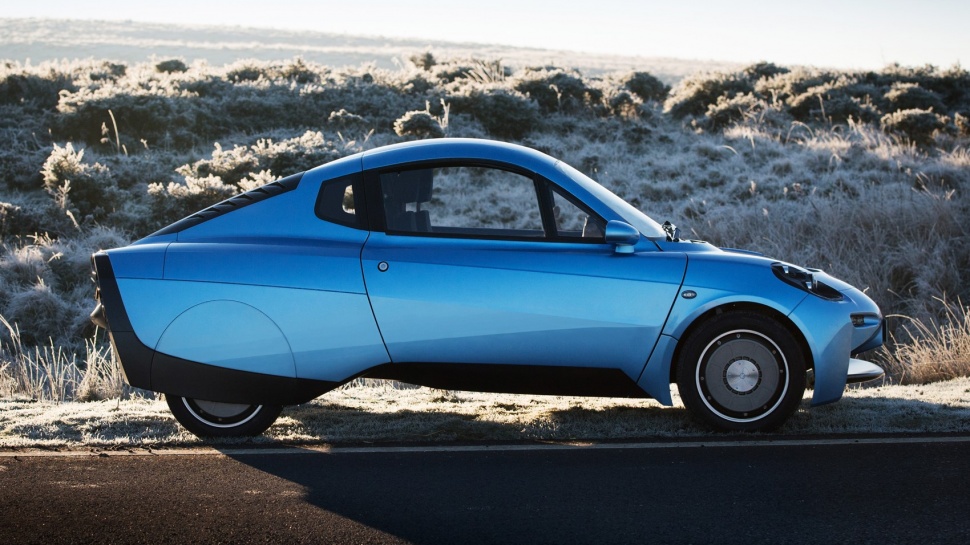A small company based in Wales, UK is trying to completely reinvent the concept of a clean car with a car called Riversimple Rasa.
‘’We began with a hydrogen fuel cell, a manifesto for sustainable design and a blank sheet of paper. Every aspect of the Rasa has been created and interrogated for simplicity, efficiency, lightness, strength, affordability, safety and sustainability. And the name Rasa is a nod to that blank sheet of paper – Tabula Rasa means ‘Clean slate’ in Latin.’’ – read more under title THE RASA PROTOTYPE IS ON THE ROAD
Is the effort to ambitious to change the motor world? With these kind of products you can never know. Maybe the first model is not going to be enough, but what Riversimple has in store sound pretty revolutionary.
A fuel cell provides electrical energy while emitting only water. Ultra-capacitors store that energy. Four wheel motors provide drive and recuperation. A carbon tub keeps weight down, and a honed design cuts drag.
The car and the system around it is potentially extremely green, as well as very clever in its business logic.
But how exactly is Riversimple Rasa different for other, failed attempts on figuring out hydrogen fuel (and making it economically possible)?
Top Gear did a research on the car;
Riversimple’s founder, Hugo Spowers talked to Top Gear. First, his car is drastically more economical with the gas it carries. Then he proposes a more efficient hydrogen distribution system too.
Let’s start with the car. And excuse us if we get a little physics-lesson on you. The first breakthrough is to decouple the maximum speed from the acceleration. An aerodynamically efficient car doesn’t need much power to get along at the national limit, so don’t give it too much.
Rasa has fuel cell making 8.5kW of electrical power. In old money that gives less than 12bhp at the wheels. But that’s enough for 60mph cruising, even uphill. It needs no more steady-state power than that. For accelerating, it releases more electric power from a bank of ultra-capacitors to add to the effort.
The reason for ultra-capacitors instead of a battery in the hybrid system is the same reason it uses four in-wheel motors. Braking. A conventional regenerative braking is limited by the need to balance front and rear braking for stability, so it can’t get full regen out of one axle without friction-braking the other. And also batteries can’t accept the power full regeneration provides. Ultracapacitors can. This extreme regeneration, hardly wasting any energy to friction braking, is the key to its efficiency.
This setup lets the Rasa drive about 300 miles on a tank. Its tank is just 1.5kg of hydrogen. And by the way the hydrogen is compressed to 350bar, not the 700bar the industry majors use. This uses less energy, and makes for much cheaper filling stations.
Drum-roll time: the Rasa’s well-to-wheel CO2 emissions, even if the hydrogen is synthesised from natural gas, is about 40g/km.
Crucially, that CO2 figure is massively better than any electric car that uses the UK’s mix of electricity generation.
And as a renewable hydrogen infrastructure grows up, the Rasa will effectively get greener. Or you could get the hydrogen from biogas, which makes for a far more efficient system than converting it to electricity to run EVs, or indeed compressing biogas to run piston-engined cars. And biogas is an aggressive climate-change agent that we mostly just vent to the sky.
Now, you might rightly point out, this is just an ultra-miniaturised two-seater with luggage space for pants and toothbrush. It’s a ‘local car’. How does it scale up? Very well, Spowers insists. He reckons a Golf-sized five-seater for motorway speed needs only about 18-20kW – or double the Rasa’s power – from the fuel-cell stack. That’s still only a fraction of the price and weight of a Mirai’s stack. And again, its tank would be much cheaper and lighter.
Spowers acknowledges that fuel cells aren’t intrinsically very efficient. But by his scheme of four motors plus capacitor plus 350-bar tank, a Riversimple vehicle would be far lighter than a battery vehicle or conventional FC vehicle. The efficiencies through light weight would more than claw back inefficiencies of the fuel cell. Well-to-wheel could be way ahead.
Tweet that to Elon.



Share the News